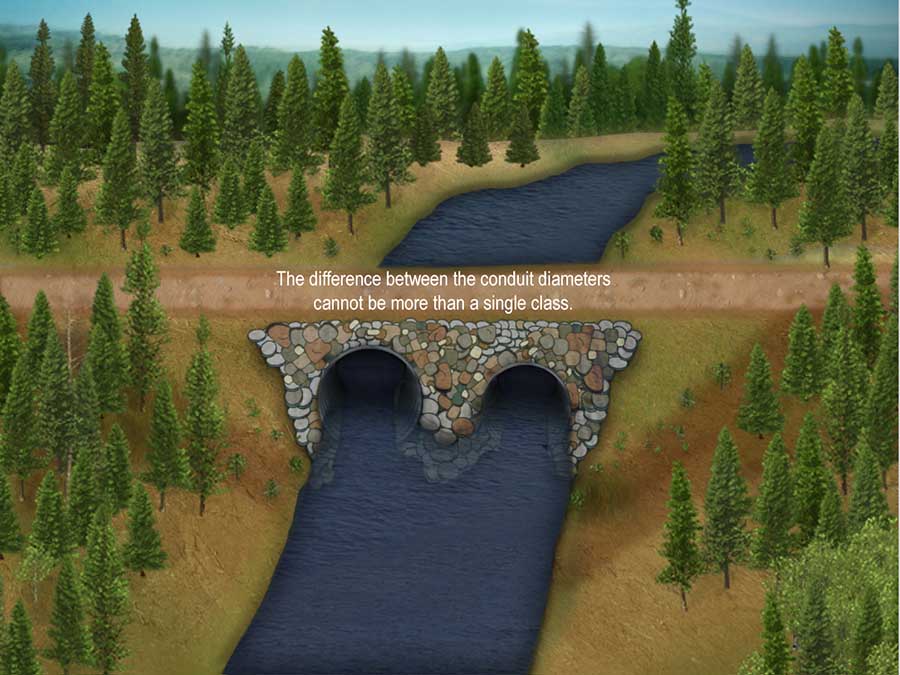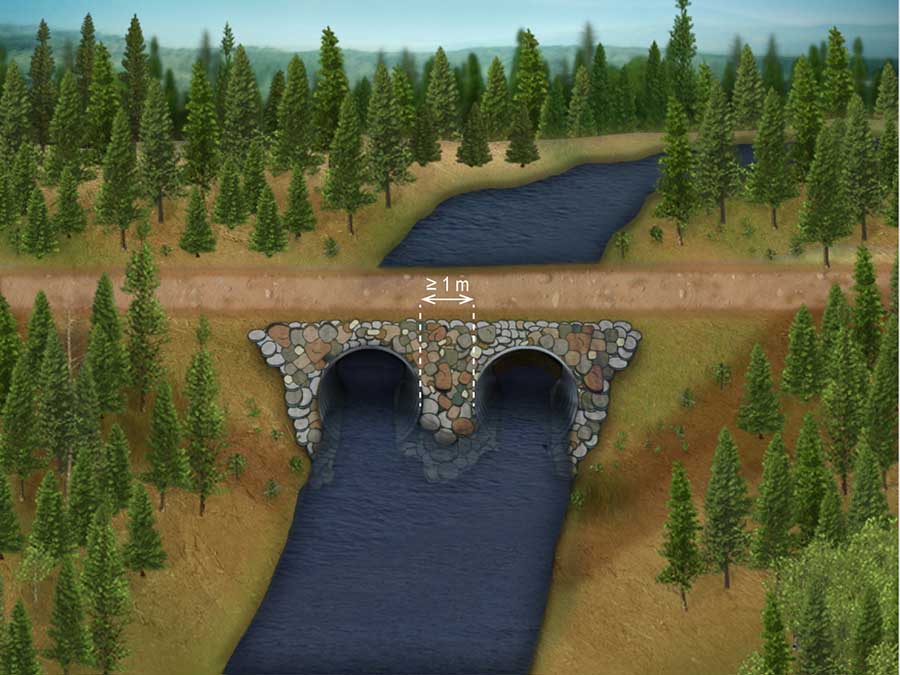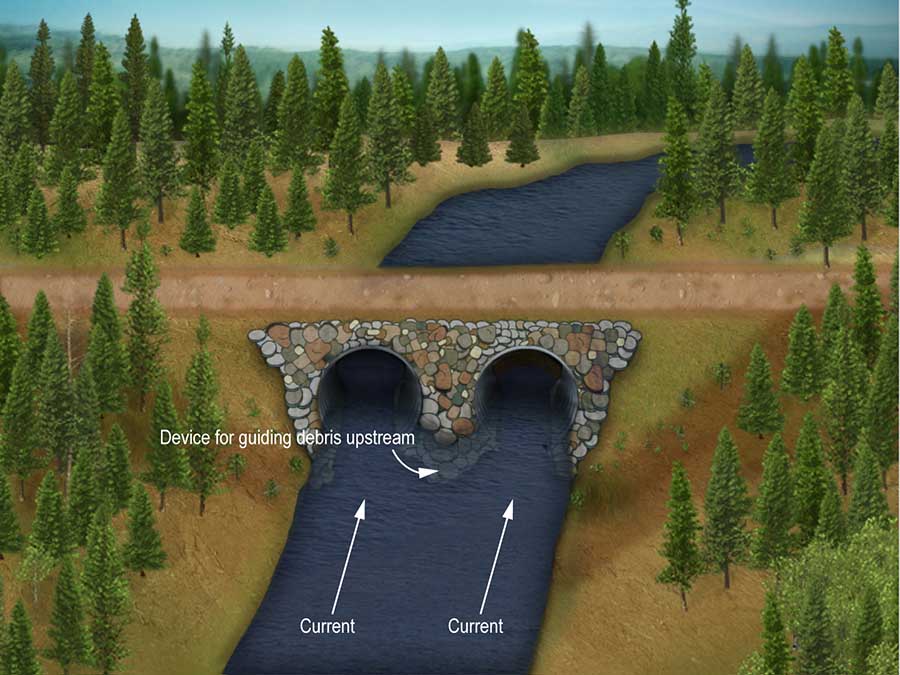Chapter V – Roads, sandpits and forest infrastructures
Division III – Bridge, culverts, removable structures and rudimentary structures
§4. General provisions applicable to bridges or culverts
Section 102
During the construction, improvement or repair of a road, a culvert may not have more than 2 parallel conduits. The conduits may be of different diameters provided that, according to Schedule 8, their diameters vary only by one class of diameter and provided that the total minimum discharge capacity determined according to the method of calculation of the peak flow for drainage basins provided for in Schedule 6 or 7, as the case may be, is met. 
1
Objectives
- To ensure the lifespan of a road, bridge or culvert
- To ensure the free flow of fish
- To obtain the operational flexibility required for certain forest development activities
Additional information
From a wildlife perspective, a single culvert is always preferable. Multiple culverts increase encroachment on fish habitat and tend to be obstructed by debris and cause sedimentation, which can affect the flow of fish. Some sustainability issues are also observed with respect to multi-conduit culverts.
In the event that the construction of a culvert with three conduits was the optimal situation to cross a watercourse, an application must be filed using the authorization application form under section 41 of the Sustainable Forest Management Act ![]() for the construction or improvement of a multi-purpose road in forests in the domain of the State (sections 92, 106 and 108) (complete according to section 106) available from the management unit in charge
for the construction or improvement of a multi-purpose road in forests in the domain of the State (sections 92, 106 and 108) (complete according to section 106) available from the management unit in charge ![]() (in French).
(in French).
The inverts of a culvert with parallel conduits and no outlets must be placed at the same level in the bed of the watercourse. The conduits must be installed in accordance with the conditions set out in Schedule 9 or section 104, depending on whether or not there is a requirement to ensure the free flow of fish under section 103 of the Regulation.
As specified in Schedule 10 of the Regulation, the inverts of a culvert with parallel conduits must be placed at the same level in the bed of the watercourse where both conduits are equipped with outlets and at different levels where outlets are installed in only one conduit.
- If outlets are installed in both conduits, the conduit inverts must be buried at the same depth.
- If outlets are installed in only one conduit, the invert of the conduit without outlets must be located 500 mm higher than the invert of the conduit with outlets. By placing the conduit without outlets higher than the conduit with outlets, water is concentrated in the latter conduit during low flow periods. This ensures a sufficient level of water in the conduit with outlets. The outlets create a series of thresholds and basins in the culvert that maintains a water flow speed and depth sufficient to ensure the free flow of fish.
Figure 102A Culvert with parallel conduits of different diameters
The minimum distance between the conduits is 1 m. 
2
Objectives
- To ensure the lifespan of a road, bridge or culvert
Figure 102B Distance between the conduits of a culvert with parallel conduits
A device for guiding debris must be installed upstream from a culvert with parallel conduits. 
3
Objectives
- To ensure the lifespan of a road, bridge or culvert
Figure 102C Culvert with parallel conduits and an upstream debris guide



